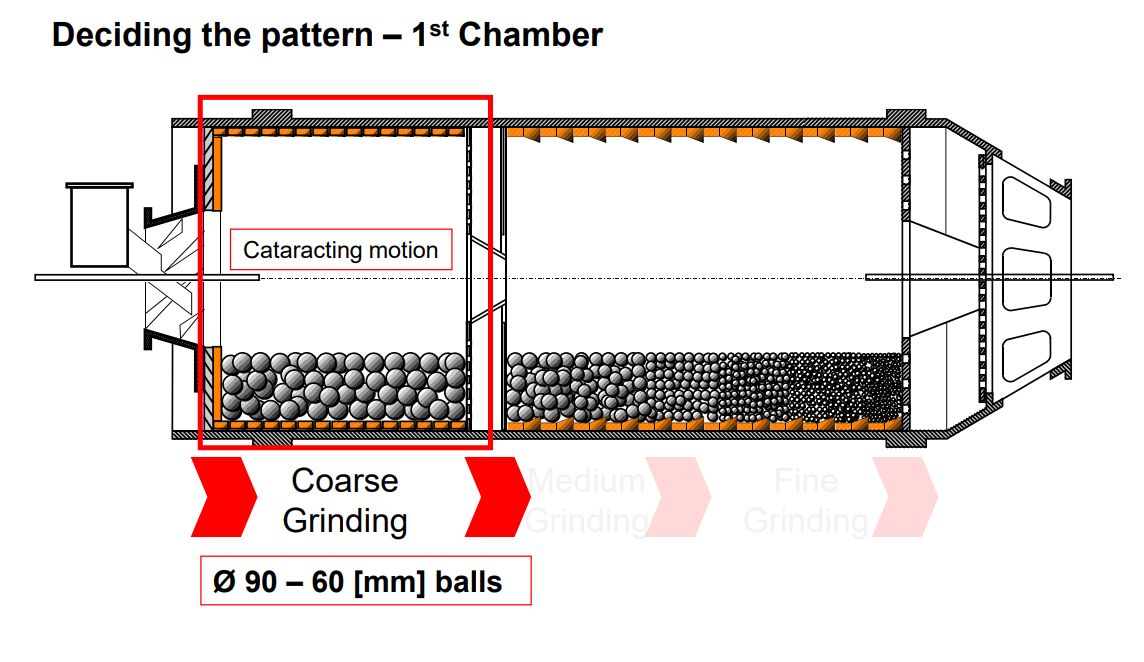Contents
How to Optimize Ball Charge in Cement Grinding

TO Download this post and all the books and excel sheets and my personal notes and presentations I collected about cement industry in the last 30 years click the below paypal link
Efficient grinding is crucial in cement production. Optimizing the ball charge in a ball mill can significantly impact grinding efficiency and overall production. This guide provides an in-depth look at how to optimize ball charge effectively.
1. Importance of Ball Charge Optimization
Optimizing the ball charge is a key factor in maximizing the performance of a ball mill. The optimization process involves evaluating the existing charge and adjusting it based on the specific needs of the mill system. This process ensures that the grinding media is operating at its peak efficiency.
2. Key Prerequisites for Effective Optimization
Before making any changes to the ball charge, several prerequisites need to be considered:
- Mill Feed Size: Ensure that clinker and additives are at 95% passing 25 mm, with 100% passing 50 mm.
- Good Separator Performance: A good separator will enhance the effectiveness of the ball charge.
- Ventilation: Maintain cement mill ventilation between 1.5 to 2.0 m/s.
- Clinker Temperature: Clinker should be below 70°C.
These factors, along with ensuring that there are no material transport or drying limitations, are critical for optimizing ball charge.
3. Indicators and Targets for Ball Charge Optimization
- Residue at the Intermediate Diaphragm: In a cement mill, the target is < 5% residue on a 2mm sieve.
- Material Filling Level: In the first chamber, larger balls should be visible within the material bed, while in the second chamber, they should be slightly above the media.
- Specific Power Consumption: Aim for 8-12 kWh/t for cement mills and 40-45% of total power consumption in raw mills.
- Diaphragm Slot Openings: Openings should be 6-8 mm in the first compartment and 8-10 mm in the second.
4. How to Conduct a Ball Charge Audit
An audit of the ball charge provides valuable insights into the current state of the mill and helps in determining the necessary adjustments. Key steps include:
- Measure Feed Size: Determine the size of the mill feed.
- Check Ball Filling Levels: Measure these after a crash stop or mill purge.
- Assess Material Filling Levels: Ensure the material levels are adequate for optimal grinding.
- Evaluate Liner Condition: Check the condition of the liners and step height.
5. Tools for Calculating Ball Charge
To assist in the ball charge optimization, several tools and formulas can be used:
- Slegten Formula: This is useful for calculating mill power consumption and estimating media requirements.
- Power Indicators: Use indicators like the BRS database to determine power consumption and fineness.
6. Step-by-Step Procedure for Optimizing Ball Charge
- Determine Target Production Rates: Compare the target rate and power consumption with actual mill performance.
- Calculate Specific Power Consumption: Measure the actual and theoretical consumption for each chamber.
- Adjust Media Quantity if Necessary: If the first chamber’s consumption is less than 8 kWh/t, increase the media quantity by adjusting the volume load.
- Reduce Media if Overpowered: If the consumption exceeds 12 kWh/t, reduce the media to avoid wasted energy.
- Increase Proportion of Larger Balls: If the first chamber power consumption is in range but has excess coarse material, increase the proportion of 90 mm balls.
- Add Smaller Balls to Second Chamber: For finer grinding, the second chamber charge should be as fine as possible without clogging.
- Make Gradual Adjustments: Any media load changes should be made in small steps to avoid overloading the mill drive.
7. Practical Example: Ball Grading
In a typical closed-circuit cement mill, the following ball gradings can be used as a reference:
Chamber 1:
- 90 mm (40%)
- 80 mm (29%)
- 70 mm (19%)
- 60 mm (12%)
Chamber 2:
- 40 mm (21%)
- 30 mm (25%)
- 25 mm (25%)
- 20 mm (29%)
In raw mills, up to 50% of the ball charge can consist of 90 mm balls, depending on the system’s design and needs.
8. Conclusion
Optimizing the ball charge is an ongoing process that requires regular audits and adjustments. By following the steps outlined in this guide, cement producers can achieve more efficient grinding, leading to lower energy consumption and higher output.
TO Download this post and all the books and excel sheets and my personal notes and presentations I collected about cement industry in the last 30 years click the below paypal link
